Closed-loop control system is a type of control system that can feed part or all of the system output back to the output end of the system through certain methods and devices, and then compare the feedback information with the original input information. The comparison results are applied to the system for control to prevent the system from deviating from the predetermined target.

The operating environment of this tutorial: Windows 10 system, Dell G3 computer.
What is a closed-loop control system
A closed-loop control system is a type of control system. The specific content refers to: returning part or all of the output of the control system to the input end of the system through certain methods and devices, then comparing the feedback information with the original input information, and then applying the comparison results to the system for control. Prevent the system from deviating from its intended goals. Closed-loop control systems utilize negative feedback. That is, an automatic control system that consists of a signal forward path and a feedback path forming a closed loop, also known as a feedback control system.
Principle
An automatic control system based on the feedback principle. The so-called feedback principle is to control based on information about system output changes, that is, by comparing the deviation between the system behavior (output) and the expected behavior, and eliminating the deviation to obtain the expected system performance. In a feedback control system, there is both a signal forward path from input to output and a signal feedback path from output to input. The two form a closed loop. Therefore, the feedback control system is also called a closed-loop control system. Feedback control is the main form of automatic control. Most automatic control systems are feedback control systems. In engineering, the feedback control system that keeps the output consistent with the expected value during operation is often called an automatic adjustment system, and the feedback control system used to accurately follow or realize a certain process is called a servo system or a servo system.
Feedback control system consists of controller, controlled object and feedback channel. The comparison link is used to subtract the input and output to give a deviation signal. This link may be collectively called the regulator together with the controller in a specific system. Taking furnace temperature control as an example, the controlled object is the furnace; the output variable is the actual furnace temperature; the input variable is a given constant temperature, generally represented by voltage. The furnace temperature is measured with a thermocouple. The thermoelectromotive force representing the furnace temperature is compared with a given voltage. The difference voltage between the two is used to drive the corresponding actuator for control after power amplification.
Basic composition
The basic composition of a typical feedback control system can be represented by the block diagram shown in the figure.

The components that make up the system are divided according to their functions in the system. There are mainly the following types:
(1) Given components: given The amount of input corresponding to the desired output.
(2) Comparison element: To find the deviation between the input quantity and the feedback quantity, an integrated operational amplifier (referred to as integrated operational amplifier) is often used to achieve this.
(3) Amplification components: Since the deviation signal is generally small and not enough to drive the load, amplification components are required, including voltage amplification and power amplification.
(4) Executive element: directly drives the controlled object to change the output. Commonly used ones include electric motors, regulating valves, hydraulic motors, etc.
(5) Measuring element: detects the controlled quantity and converts it into the required electrical signal. Commonly used in control systems include tachometer generators, photoelectric encoders, etc. for speed detection; rotary transformers, automatic machines, etc. for position and angle detection; transformers for current detection and thermocouples for temperature detection. wait. These detection devices generally convert the detected physical quantities into corresponding continuous or discrete voltage or current signals.
(6) Correction component: Also called compensation component, it is a component whose structure and parameters are easy to adjust. It is connected in the system in a series or feedback manner to complete the required computing functions to improve the performance of the system. According to their different positions in the system, they can be called series correction original elements and feedback correction elements respectively.
For more related knowledge, please visit the FAQ column!
The above is the detailed content of What is a closed loop control system. For more information, please follow other related articles on the PHP Chinese website!
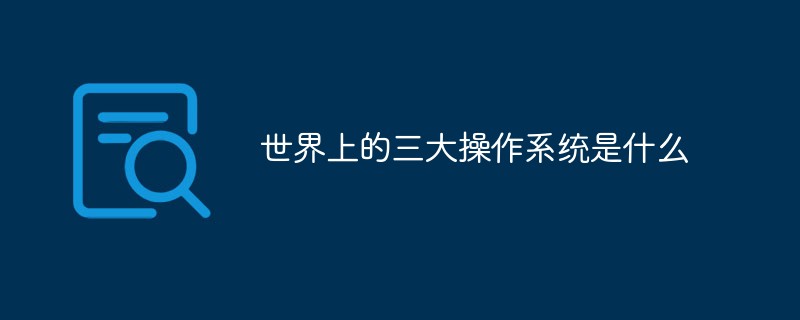 世界上的三大操作系统是什么Aug 22, 2022 pm 04:24 PM
世界上的三大操作系统是什么Aug 22, 2022 pm 04:24 PM三大操作系统:1、windows,是微软公司以图形用户界面为基础研发的操作系统,主要运用于计算机、智能手机等设备。2、macOS,是一套由苹果开发的运行于Macintosh系列电脑上的操作系统,是基于XNU混合内核的图形化操作系统。3、linux,是一种免费使用和自由传播的类UNIX操作系统,是一个基于POSIX的多用户、多任务、支持多线程和多CPU的操作系统。
 vivo手机是什么系统Jul 04, 2022 am 11:10 AM
vivo手机是什么系统Jul 04, 2022 am 11:10 AMvivo手机是“Funtouch OS”和“OriginOS”系统;2020年11月18日之前,vivo手机搭载的都是“Funtouch OS”系统,2020年11月18日“OriginOS”操作系统发布之后,vivo手机搭载的就是“OriginOS”操作系统了,首款搭载该系统的是“vivo X60”系列手机。
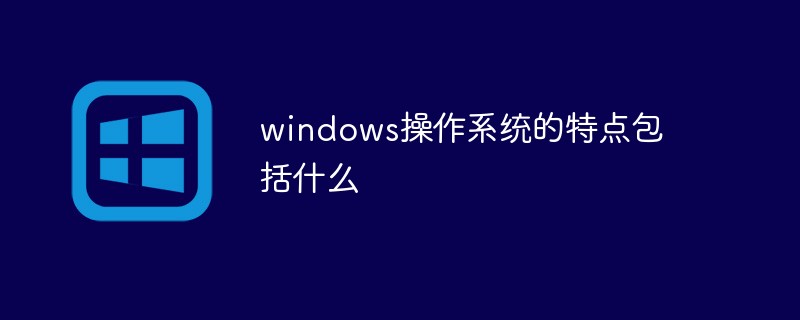 windows操作系统的特点包括什么Sep 28, 2020 pm 12:02 PM
windows操作系统的特点包括什么Sep 28, 2020 pm 12:02 PMwindows操作系统的特点包括:1、图形界面;直观高效的面向对象的图形用户界面,易学易用。2、多任务;允许用户同时运行多个应用程序,或在一个程序中同时做几件事情。3、即插即用。4、出色的多媒体功能。5、对内存的自动化管理。
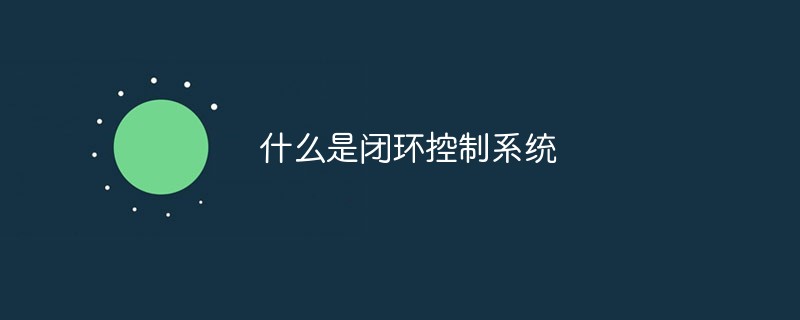 什么是闭环控制系统Jul 04, 2022 pm 04:18 PM
什么是闭环控制系统Jul 04, 2022 pm 04:18 PM闭环控制系统是控制系统的一种类型,能够把系统输出量的一部分或全部通过一定方法和装置反送回系统的输出端,再将反馈信息与原输入信息进行比较,将比较的结果施加于系统进行控制,避免系统偏离预定目标。
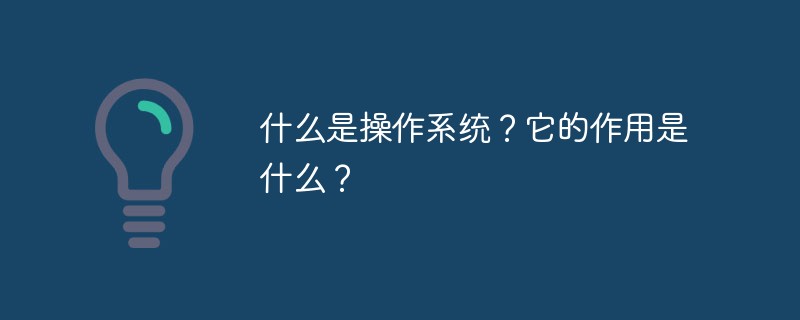 什么是操作系统?它的作用是什么?Dec 07, 2020 pm 03:04 PM
什么是操作系统?它的作用是什么?Dec 07, 2020 pm 03:04 PM操作系统是管理计算机硬件与软件资源的计算机程序,是控制和管理计算机软硬件资源,以尽量合理有效的方法组织多个用户共享多种资源的程序集合。操作系统的作用:1、管理系统中的各种资源;2、为用户提供良好的界面。从计算机用户的角度来说,操作系统体现为其提供的各项服务;从程序员的角度来说,其主要是指用户登录的界面或者接口;从设计人员的角度来说,就是指各式各样模块和单元之间的联系。
 miui是什么系统Oct 27, 2022 pm 03:59 PM
miui是什么系统Oct 27, 2022 pm 03:59 PMmiui是小米公司旗下基于Android系统深度优化、定制、开发的第三方手机操作系统。MIUI在Android系统基础上,针对中国用户进行了深度定制,专为小米智能手机设计,包含红米系列,同时支持手机物联。在隐私方面,miui系统会记录各应用的一切敏感行为,并呈现出来;当应用使用相机、录音、定位权限时,系统会给出明显提示,点击提示即可进行管控。
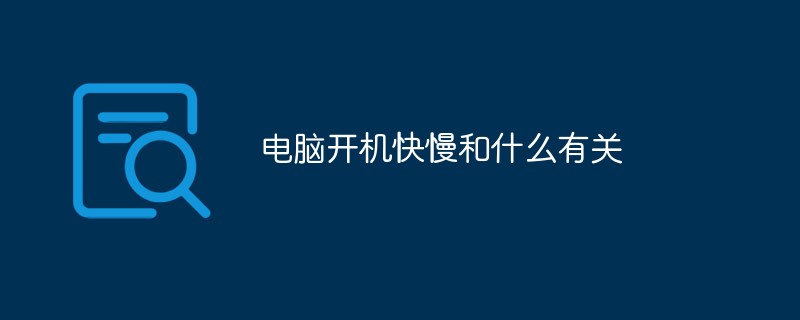 电脑开机快慢和什么有关Aug 12, 2022 am 10:47 AM
电脑开机快慢和什么有关Aug 12, 2022 am 10:47 AM影响电脑开机快慢的因素:1、操作系统;如果操作系统太过庞大,开机要加载的文件、服务、软件过多就会让开机速度变慢。2、硬件;硬件对于开机的影响主要是CPU、内存容量和硬盘速度,主板中预存的引导程序会引导CPU通过主板从硬盘中调用启动系统的数据,然后在内存空间内运行,因而CPU、内存大小和硬盘直接影响电脑开机的速度。3、加载项;加载项越多,硬盘要加载的东西就越多,开机速度就越慢。
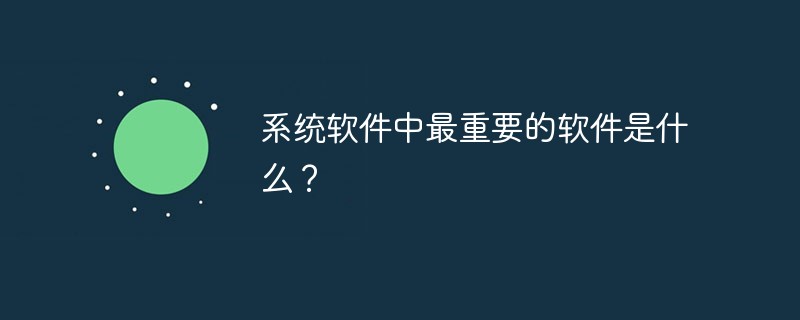 系统软件中最重要的软件是什么?Dec 10, 2020 pm 04:56 PM
系统软件中最重要的软件是什么?Dec 10, 2020 pm 04:56 PM系统软件中最重要的软件是“操作系统”。在计算机中,操作系统是其最基本也是最为重要的基础性系统软件;操作系统需要处理如管理与配置内存、决定系统资源供需的优先次序、控制输入设备与输出设备、操作网络与管理文件系统等基本事务。

Hot AI Tools

Undresser.AI Undress
AI-powered app for creating realistic nude photos

AI Clothes Remover
Online AI tool for removing clothes from photos.

Undress AI Tool
Undress images for free

Clothoff.io
AI clothes remover

AI Hentai Generator
Generate AI Hentai for free.

Hot Article

Hot Tools

SublimeText3 Mac version
God-level code editing software (SublimeText3)

SublimeText3 Linux new version
SublimeText3 Linux latest version

SecLists
SecLists is the ultimate security tester's companion. It is a collection of various types of lists that are frequently used during security assessments, all in one place. SecLists helps make security testing more efficient and productive by conveniently providing all the lists a security tester might need. List types include usernames, passwords, URLs, fuzzing payloads, sensitive data patterns, web shells, and more. The tester can simply pull this repository onto a new test machine and he will have access to every type of list he needs.

WebStorm Mac version
Useful JavaScript development tools

SublimeText3 English version
Recommended: Win version, supports code prompts!







